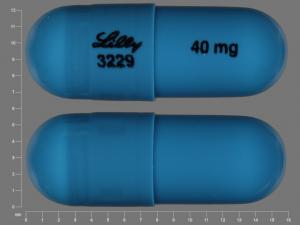Strattera and Alcohol/Food Interactions
There are 2 alcohol/food/lifestyle interactions with Strattera (atomoxetine).
Caffeine Atomoxetine
Moderate Drug Interaction
MONITOR: Coadministration of two or more sympathomimetic agents may increase the risk of adverse effects such as nervousness, irritability, and increased heart rate. Central nervous system (CNS) stimulants, particularly amphetamines, can potentiate the adrenergic response to vasopressors and other sympathomimetic agents. Additive increases in blood pressure and heart rate may occur due to enhanced peripheral sympathetic activity.
MANAGEMENT: Caution is advised if two or more sympathomimetic agents are coadministered. Pulse and blood pressure should be closely monitored.
References (7)
- Rosenblatt JE, Lake CR, van Kammen DP, Ziegler MG, Bunney WE Jr (1979) "Interactions of amphetamine, pimozide, and lithium on plasma norepineophrine and dopamine-beta-hydroxylase in schizophrenic patients." Psychiatry Res, 1, p. 45-52
- Cavanaugh JH, Griffith JD, Oates JA (1970) "Effect of amphetamine on the pressor response to tyramine: formation of p-hydroxynorephedrine from amphetamine in man." Clin Pharmacol Ther, 11, p. 656
- (2001) "Product Information. Adderall (amphetamine-dextroamphetamine)." Shire Richwood Pharmaceutical Company Inc
- (2001) "Product Information. Tenuate (diethylpropion)." Aventis Pharmaceuticals
- (2001) "Product Information. Sanorex (mazindol)." Novartis Pharmaceuticals
- (2001) "Product Information. Focalin (dexmethylphenidate)." Mikart Inc
- (2002) "Product Information. Strattera (atomoxetine)." Lilly, Eli and Company
Switch to consumer interaction data
Atomoxetine High Blood Pressure (Hypertension)
Major Potential Hazard, Moderate plausibility
CNS stimulants - hypertension
CNS stimulants increase blood pressure and heart rate; the use of some agents may be contraindicated in patients with severe/uncontrolled hypertension. Caution should be used when administering to patients with preexisting high blood pressure (even mild hypertension) and other cardiovascular conditions. All patients under treatment should be regularly monitored for potential tachycardia and hypertension.
References (13)
- (2001) "Product Information. Dopram (doxapram)." West Ward Pharmaceutical Corporation
- (2001) "Product Information. Dexedrine (dextroamphetamine)." SmithKline Beecham
- (2001) "Product Information. Didrex (benzphetamine)." Pharmacia and Upjohn
- (2001) "Product Information. Tenuate (diethylpropion)." Aventis Pharmaceuticals
- (2001) "Product Information. Focalin (dexmethylphenidate)." Mikart Inc
- (2002) "Product Information. Concerta (methylphenidate)." Alza
- (2002) "Product Information. Strattera (atomoxetine)." Lilly, Eli and Company
- (2007) "Product Information. Vyvanse (lisdexamfetamine)." Shire US Inc
- (2007) "Product Information. Nuvigil (armodafinil)." Cephalon Inc
- (2012) "Product Information. Phendimetrazine Tartrate SR (phendimetrazine)." Sandoz Inc
- (2019) "Product Information. Phentermine Hydrochloride (phentermine)." Tagi Pharma Inc
- (2023) "Product Information. Desoxyn (methamphetamine)." Recordati Rare Diseases Inc, SUPPL-38
- (2024) "Product Information. Modafinil (modafinil)." Heritage Pharmaceuticals Inc
Switch to consumer interaction data
Strattera drug interactions
There are 422 drug interactions with Strattera (atomoxetine).
Strattera disease interactions
There are 9 disease interactions with Strattera (atomoxetine) which include:
- narrow angle glaucoma
- cardiac disease
- glaucoma
- hypertension
- psychiatric disorders
- liver disease
- renal dysfunction
- seizure disorders
- urinary retention
More about Strattera (atomoxetine)
- Strattera consumer information
- Check interactions
- Compare alternatives
- Pricing & coupons
- Reviews (546)
- Drug images
- Side effects
- Dosage information
- Patient tips
- During pregnancy
- Support group
- Drug class: adrenergic uptake inhibitors for ADHD
- Breastfeeding
- En español
Related treatment guides
Drug Interaction Classification
| Highly clinically significant. Avoid combinations; the risk of the interaction outweighs the benefit. | |
| Moderately clinically significant. Usually avoid combinations; use it only under special circumstances. | |
| Minimally clinically significant. Minimize risk; assess risk and consider an alternative drug, take steps to circumvent the interaction risk and/or institute a monitoring plan. | |
| No interaction information available. |
See also:
Further information
Always consult your healthcare provider to ensure the information displayed on this page applies to your personal circumstances.


